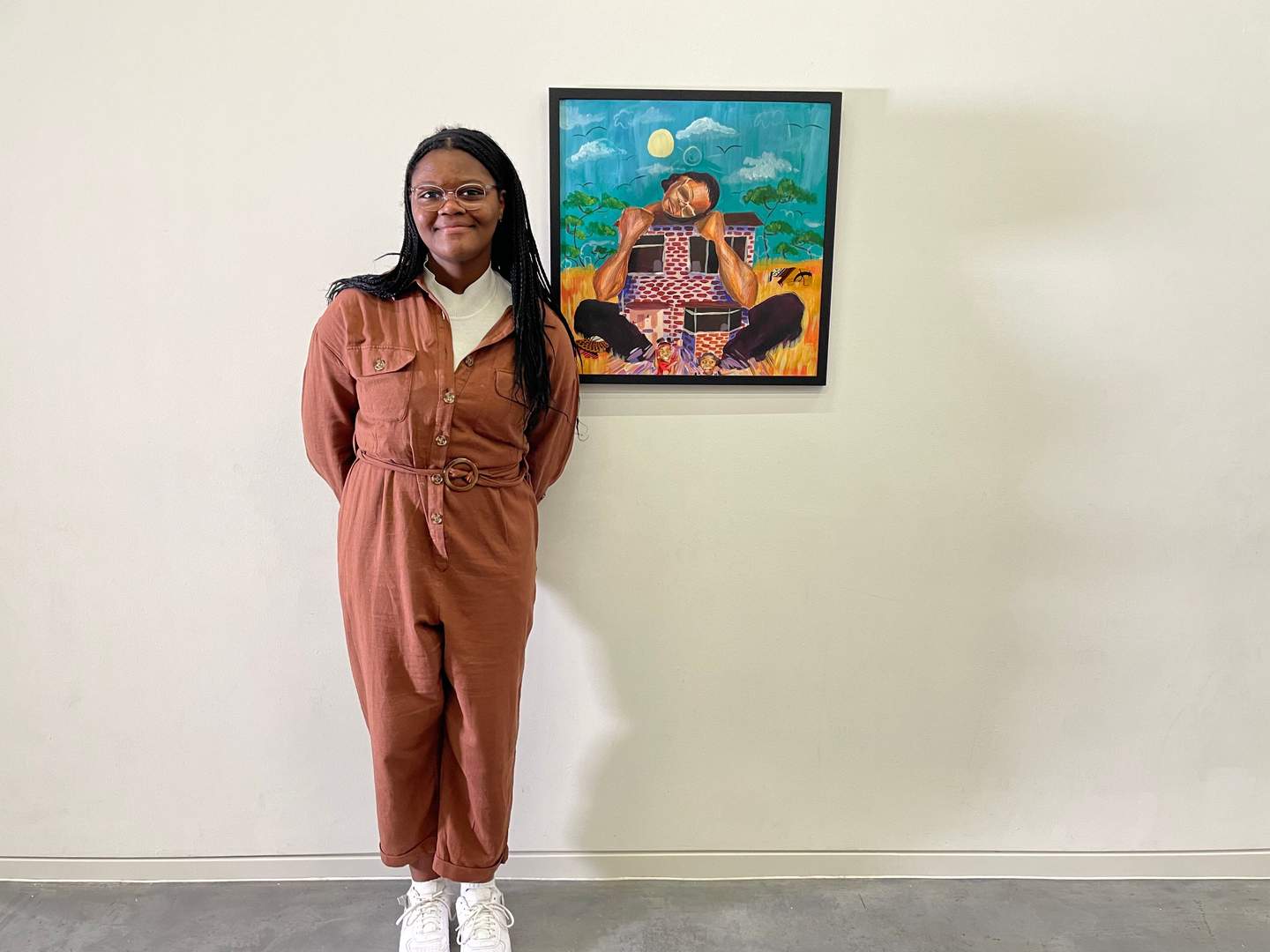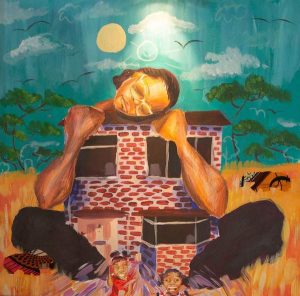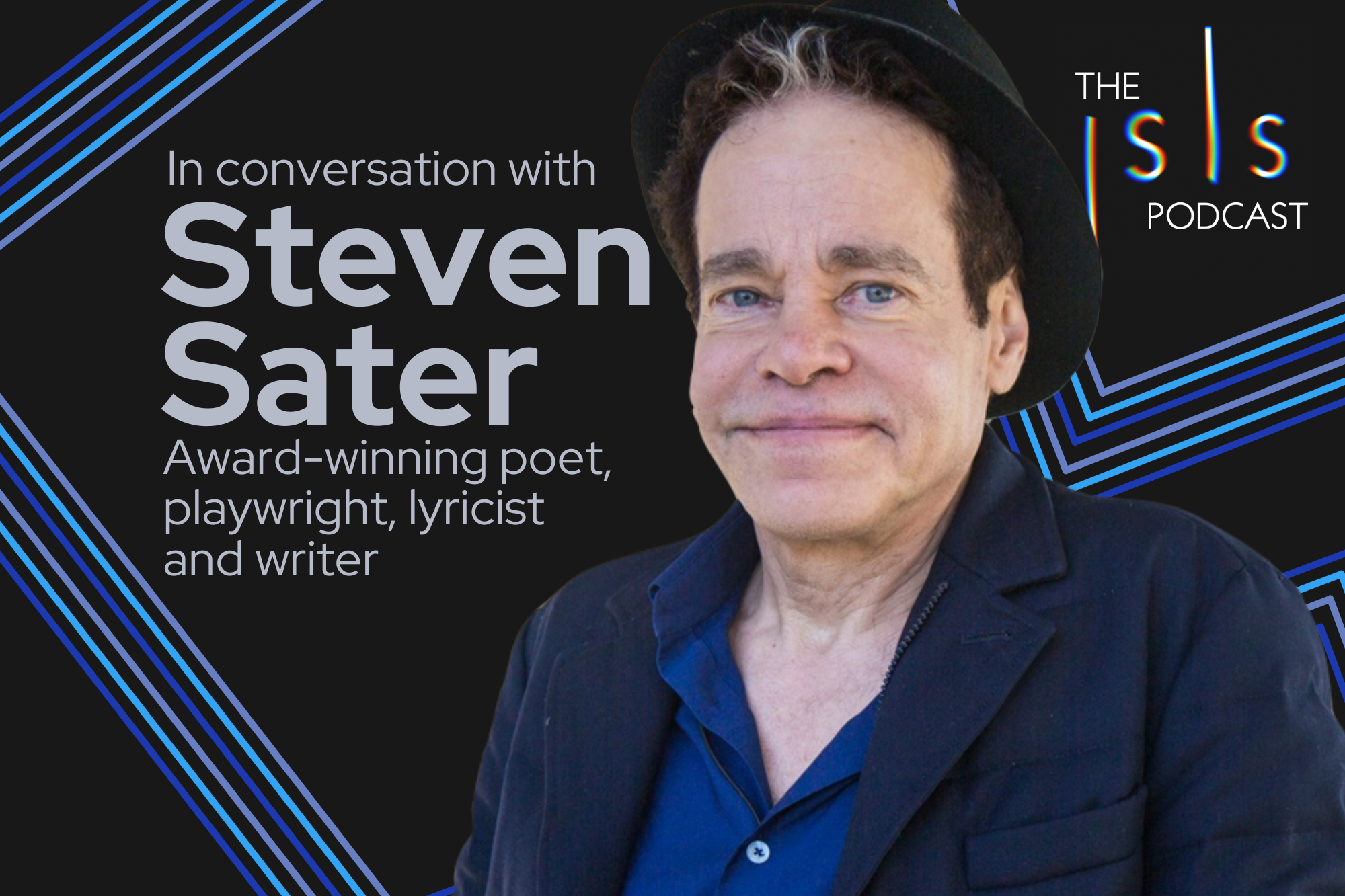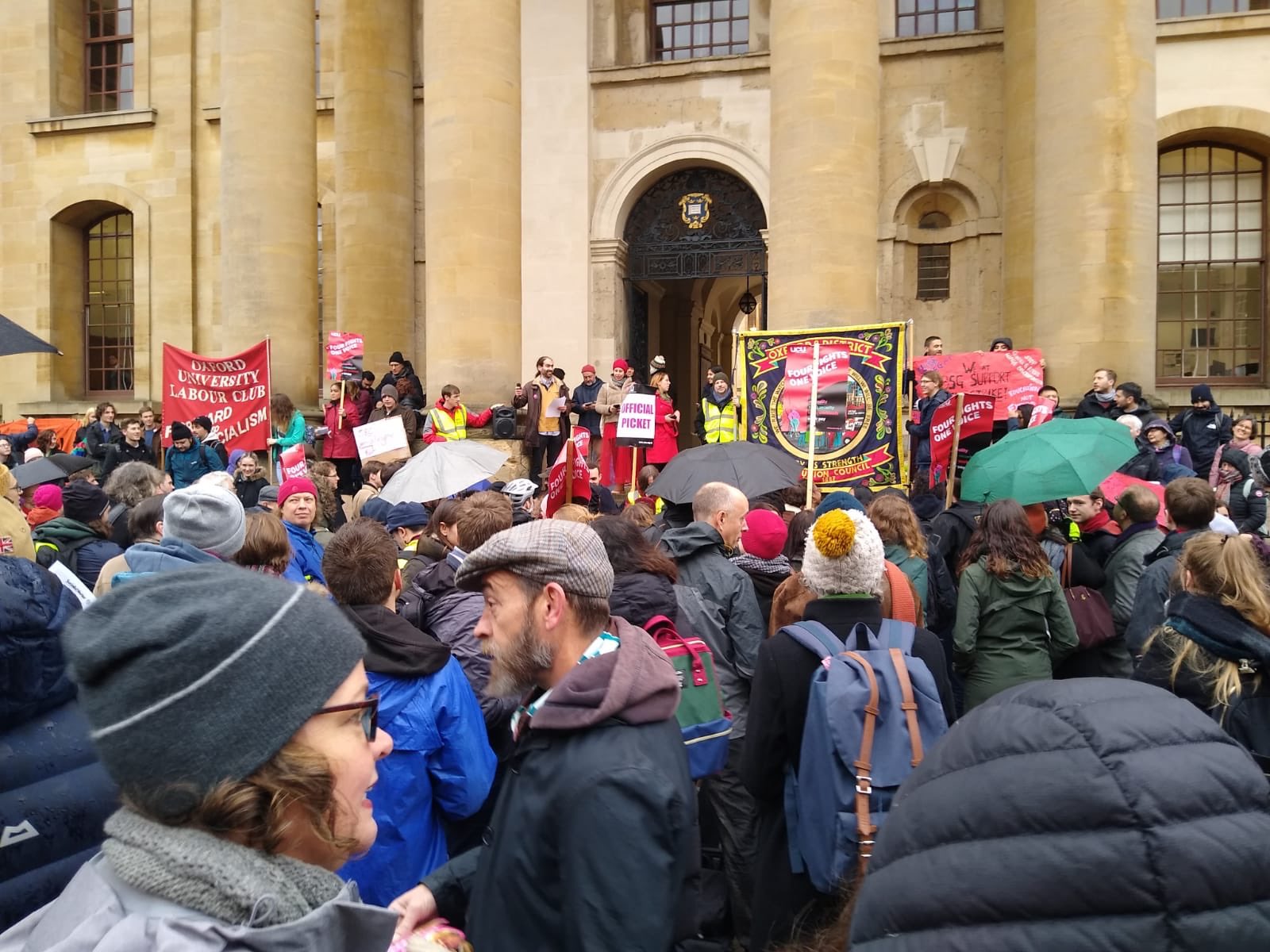
Chloe Chidume’s ‘Homage’: In conversation with Britain’s Best Young Artist
Chloe Chidume, 14 from Newcastle, won BBC’s Britain’s Best Young Artist 2023, making her the youngest artist to have had their work hung in the Tate. Her painting ‘Homage’ was selected by judges, Ricky Martin, Sadie Clayton, and Tate’s Director of Learning, Mark Miller. The piece layers paint, pencil, and African fabric to craft an intricate texture reflective of Chloe’s testimony to memory and personal background.
Tell me about your experience on the show and where you began to build the inspiration for your piece?
Before I went on the show I honestly didn’t really paint for any reason, [I was] just doing it. But then obviously, there were these briefs to fit. So, I started thinking with more meaning behind what I was doing and not just … for aesthetics, there was more behind it. In the first round, we went to the Cheltenham Art Gallery – it was a very artistic area in that sense and also there was lots of cool graffiti, which I liked. In the semi-finals we actually went to Hackney, and we were looking at community centres and things like that, art within a community. For the finals especially, I would’ve liked more guidance in the prompts. I didn’t know how to move forward because they make the briefs very vague on purpose. It was amazing though, meeting new people, people with common interests. I still talk to the other contestants and the judges were really nice and welcoming.
You have previously described your painting as finding the beauty in the mundane. Can you elaborate on that?
I think it’s what makes you you. I thought people were going to do hobbies and interests in external things. At the time, there was nothing that I was really interested in apart from art, and they were like, you’re not allowed to do art, so I [didn’t] know what to do. [Then] I was just in my kitchen with my mum and we were cooking and I was like, I really enjoy doing this. I really enjoy spending time with my family. But I was scared it sounded boring. As I was thinking about it, I was looking at this artist, called Owen Rival. And he just paints his normal life and he makes it look so interesting that he’s doing the most boring things. And yeah, maybe I could try doing that, base my painting off something so simple so that everyone relates to it. I didn’t want it to be fixed, not everyone’s interested in art … but everyone has memories.
How long did the painting take you?
Well, they gave us three hours to do it and it was 60 by 60. I was rushing the whole time. I know Scarlet and Jay were also rushing the whole time, and we were getting really stressed. I think we almost rioted at one point because we were desperate for more time … so they gave us, I think, another 15 minutes on top of that. I managed to get it done. But I think if I were to go back, I would definitely change something.
If you had the opportunity to change something about it. What would it be? Or would you leave it as is?
I feel like there’s a beauty in leaving it the way it is. That’s how I was feeling in the moment. The one thing is where I used coloured pencil, I [would] probably paint [instead] because I feel like I’ve advanced in my painting skills. Pencil took up a lot of time that I could have used to work on the background.
Your decision to add in fabric really tied the painting together. When did you decide to do that?
I was looking for different sources of inspiration, I was really stumped at one point. I had drawn out the whole scene and I was like, it’s really playing out but I feel like something else is needed. So, I was thinking about African culture and the fabrics are so beautiful. I was looking at animals that were normally associated with the desert that you could find in Africa, specifically the south. So I skimmed across elephants [and thought], Oh, that’ll be probably the easiest to do at the time given. And if I could use African fabrics, just so that the background is quite literally from Africa.
You’ve said you found inspiration in family photos. What do you think the relationship between photography and painting is for you?
Well, I’m normally a realist painter, I paint from life. Obviously my painting was about my family, my home life. I wanted to look back on memories that had already been captured in my house, memories I had made. Putting memories in your work gives it so much more meaning for you and also for other people. Using the photos, but not copying them, and using them in a creative way is the best way to make your artwork stand out and make it original. Like you’ve used something else, in a way.
The girl in the painting is holding the home, which I think is very powerful. How do you think the meaning of the painting would shift if the girl was smaller than, or inside the home?
The reason why I decided to make myself bigger is, in a way, my house does protect me in a very literal way. So metaphorically I wanted to give back and protect my house, protect my memories, return the favour, that sort of thing. If I was smaller [in the painting], it wouldn’t have the same effect on people.

How did it feel knowing that it was hung in the Tate?
It was really surreal. They said that I was the youngest person to ever have their art hung in the Tate. So I was like, wow, is this professional work? People are looking at my art and they’re getting feelings from it. They’re inspired by it. They’re interested in what I have to say and what I want to project to everybody else. I think that’s so interesting, that I can inspire other people to do things like other people inspire me and that I can be that figure for other people.
Considering you were only 13, the youngest on the show, did you feel intimidated?
There is that sense of intimidation … they’re older than me, they’ve had one or two more years. I know that Jay, who was also in the final, was older than me. I [thought] oh, well, he’s automatically better than me because I’m younger than him or I haven’t had as much experience as he has, or comparing where we grew up, like they were from down South. Scott’s from Scotland and others grew up in these areas with really nice environments – I felt a sense of imposter syndrome … [thinking] I shouldn’t be here. I know that my painting was hung next to a Robert and Roberta Smith painting, a brilliant and well-known painter and I [thought], next to this person, I’m not all that good, it shouldn’t be there and something else should be there. But I’ve gotten more used to it, just being who I am and being comfortable in myself. That’s the most important thing, but I still feel that sense of, oh, well, I’m young, I’m not as good … I think everyone feels like that.
What artists are you inspired by?
I really like Matthew Sorgie, he uses colour in a really unique way. I also like Owen Rival, he also uses colour in a way that I don’t. I really want to work on that because I tend to use complementary colours and quite limited colour palettes, I really want to experiment with that sort of thing. I also really like Renaissance paintings although I’m not sure it’s something I do myself. I think with contemporary art, people are open and can be as free with their work as they please.
Having been around so many talented young artists, where do you think the future of art lies?
It could go anywhere. I think people could start making anything. I like the messages that people are more open to talk about how people can say what they want to know, and how everything can be all unknown. It’s not one thing. There’s a lot of debate online of what is art and what isn’t art, but I feel like anything that people create, it’s all artistic if we decide it is. Even stuff in your room, your house. We don’t have to all agree. I’d say there’s art in everything. So, it could go anywhere, it could be everything. I think we’ve kind of overcome that barrier of art being very specific things. So, who knows? It’s everything.∎
Words by Maria Cherfaoui. Photography courtesy of Chloe Chidume and the BBC.







